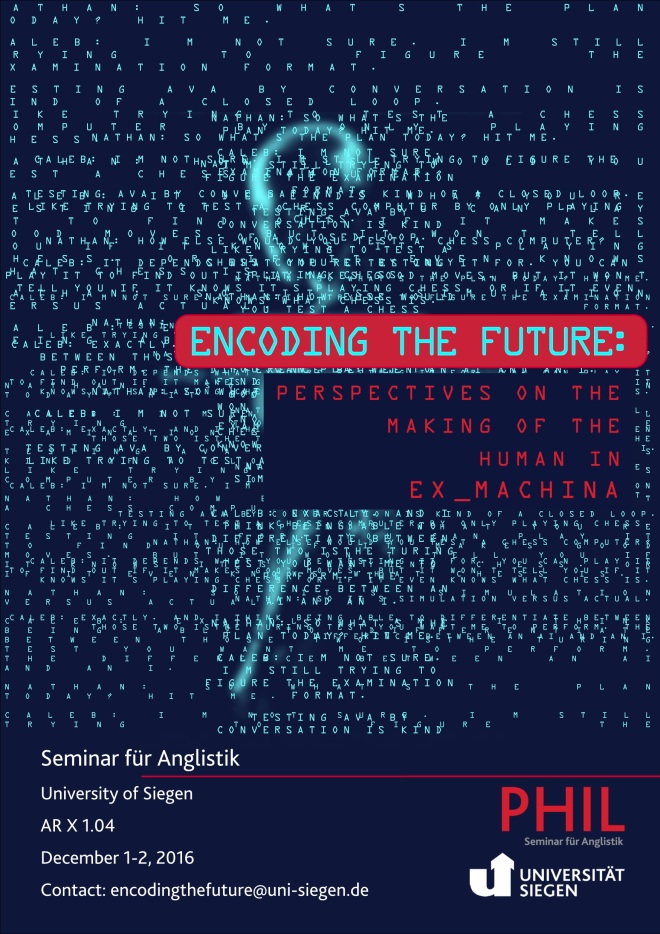
I am excited and honored to be delivering one of the keynote addresses at this conference on “Encoding the Future” at the University of Siegen, December 1-2, 2016. More info and program here.

I am excited and honored to be delivering one of the keynote addresses at this conference on “Encoding the Future” at the University of Siegen, December 1-2, 2016. More info and program here.
As I wrote here recently, I will be taking part in a roundtable discussion on media theory at this year’s FLOW Conference at the University of Texas (September 11-13, 2014). My panel — which will take place on Friday, September 12 at 1:45-3:00 pm (the full conference schedule is now online here) — consists of Drew Ayers (Northeastern University), Hunter Hargraves (Brown University), Philip Scepanski (Vassar College), Ted Friedman (Georgia State University), and myself.
In preparation for the panel, which is organized as a roundtable discussion rather than a series of paper presentations, each of us is asked to formulate a short position paper outlining our answer to an overarching discussion question. Clearly, the positions put forward in such papers are not intended to be definitive answers but provocations for further discussion. Below, I am posting my position paper, and I would be happy to receive any feedback on it that readers of the blog might care to offer.
Nonhuman Media Theories and their Human Relevance
Response to the FLOW 2014 roundtable discussion question “Theory: How Can Media Studies Make ‘The T Word’ More User-Friendly?”
Shane Denson (Leibniz Universität Hannover, Germany / Duke University)
1. Theory Between the Human and the Nonhuman
Rejecting the excesses of deconstructive “high theory,” approaches like cultural studies promised to be more down-to-earth and “user-friendly.” While hardly non-theoretical, this was “theory with a human face”; against poststructuralism’s anti-humanistic tendencies, human interaction (direct or mediated) returned to the center of inquiry. Today, however, we are faced with (medial) realities that exceed or bypass human perspectives and interests: from the microtemporal scale of computation to the global scale of climate change, our world challenges us to think beyond the human and embrace the nonhuman as an irreducible element in our experience and agency. Without returning to the old high theory, it therefore behooves us to reconcile the human and the nonhuman. Actor-network theory, affect theory, media archaeology, “German media theory,” and ecological media theory all highlight the role of the nonhuman, while their political (and hence human) relevance asserts itself in the face of very palpable crises – e.g. ecological disaster, which makes our own extinction thinkable (and generates a great variety of media activity), but also the inhuman scale and scope of global surveillance apparatuses.
2. With Friends Like These…
The roundtable discussion question asks how theory can be made more “user-friendly”; but first we should ask what this term suggests for the study of media. Significantly, the term “user-friendly” itself originates in the context of media – specifically computer systems, interfaces, and software – as late as the 1970s or early 1980s. Its appearance in that context can be seen as a response to the rapidly increasing complexity of a type of media – digital computational media – that function algorithmically rather than indexically, in a register that, unlike cinema and other analogue media, is not tuned to the sense-ratios of human perception but is designed precisely to outstrip human faculties in terms of speed and efficiency. The idea of user-friendliness implies a layer of easy, ergonomic interface that would tame these burgeoning powers and put them in the user’s control, hence empowering rather than overwhelming. As consumers, we expect our media technologies to empower us thus: they should enable rather than obstruct our purposes. But should we expect this as students of media? Should we not instead question the ideology of transparency, and the disciplining of agency it involves? Hackers have long complained about the excesses of “user-obsequious” interfaces, about “menuitis” and the paradoxical disempowerment of users through the narrow bandwidth interfaces of WIMP systems (so-called because of their reliance on “windows, icons, menus/mice, pointers”). Such criticisms challenge us to rethink our role as users – both of media and of media theory – and to adopt a more experimental attitude towards media, which are capable of shaping as much as accommodating human interests.
3. Media as Mediators
The give and take between empowerment and disempowerment highlights the situational, relational, and ultimately transformational power of media. And while cultural studies countenanced such phenomena in terms of hegemony, subversion, and resistance, the very agency of the would-be “user” of media might be open to more radical destabilization – particularly against the background of media’s digital revision, which “discorrelates” media contents (images, sounds, etc.) from human perception and calls into question the validity of a stable human perspective. More generally, it makes sense to think about media in terms of agencies and affordances rather than mere channels between pre-existing subjects and objects – to see media, in Bruno Latour’s terms, not as mere “intermediaries” but as “mediators” that generate specific, historically contingent differences between subject and object, nature and culture, human and nonhuman. Recognizing this non-neutral, lively and unpredictable, dimension of media invites an experimental attitude that not only taps creative uses of contemporary media (as in media art) but also privileges a sort of hacktivist approach to media history as non-linear, non-teleological, and non-deterministic (as in media archaeology) – and that ultimately rethinks what media are.
4. Speculative Media Theory
By expanding the notion of mediation beyond the field of discrete media apparatuses, and beyond their communicative and representational functions, approaches like Latour’s actor-network theory gesture towards a nonhuman and ultimately speculative media theory concerned with an alterior realm, beyond the phenomenology of the human (as we know it). This sort of theory accords with the aims of speculative realism, a loose philosophical orientation defined primarily by its insistence on the need to break with “correlationism,” or the anthropocentric idea according to which being (or reality) is necessarily correlated with the categories of human thought, perception, and signification. Contemporary media in particular – including the machinic automatisms of facial recognition, acoustic fingerprinting, geotracking, and related systems, as well as the aesthetic deformations of what Steven Shaviro describes as “post-cinematic” moving images – similarly problematize the correlation of media with the forms (and norms) of human perception. More generally, a speculative and non-anthropocentric perspective equips us to think about the way in which media have always served not as neutral tools but, as Mark B. N. Hansen argues, as the very “environment for life” itself.
5. Media Theory for the End of the World
Perhaps most concretely, the appeal of this perspective lies in its appropriateness to an age of heightened awareness of ecological fragility. As we begin reimagining our era under the heading of the Anthropocene – as an age in which the large-scale environmental effects of human intervention are appallingly evident but in which the extinction of the human becomes thinkable as something more than a science-fiction fantasy – our media are caught up in a myriad of relations to the nonhuman world: they mediate between representational, metabolic, geological, and philosophical dimensions of an “environment for life” undergoing life-threatening climate change. Like never before, students of media are called upon to correlate content-level messages (such as representations of extinction events) with the material infrastructures of media (like their environmental situation and impact). The Anthropocene, in short, not only elicits but demands a nonhuman media theory.
My family and I are just about to relocate from Texas (where we’ve been based for the past couple of months) to North Carolina, where I will embark on a 2-year DAAD postdoctoral fellowship at Duke University beginning August 1. It turns out, however, that two conferences will have me returning to the Lone Star State this fall: first, the Flow Conference 2014, which will take place from September 11-13 at the University of Texas at Austin, and then the annual conference of the Society for Literature, Science, and the Arts (SLSA) the following month, October 9-12, hosted this year by Southern Methodist University in Dallas.
At the Flow Conference, I will be participating in a roundtable discussion on “Theory.” By way of preparation, participants are asked to prepare a short position paper, and I will post mine here in due time. For now, the ground I wish to cover is outlined in this brief answer to the discussion question “How can media studies make theory more user-friendly?”
Nonhuman Media Theories and their Human Relevance
Shane Denson
Rejecting the excesses of deconstructive “high theory,” approaches like cultural studies promised to be more down-to-earth and “user friendly.” While hardly non-theoretical, this was “theory with a human face”; against poststructuralism’s anti-humanistic tendencies, human interaction (direct or mediated) returned to the center of inquiry. Today, however, we are faced with (medial) realities that exceed or bypass human perspectives and interests: from the microtemporal scale of computation to the global scale of climate change, our world challenges us to think beyond the human and embrace the nonhuman as an irreducible element in our experience and agency. Without returning to the old high theory, it behooves us to reconcile the human and the nonhuman. Actor-network theory, affect theory, media archaeology, “German media theory,” and ecological media theory all highlight the role of the nonhuman, while their political (and hence human) relevance asserts itself in the face of very palpable crises – e.g. ecological disaster, which makes our own extinction thinkable (and generates a great variety of media activity), but also the inhuman scale and scope of global surveillance apparatuses.
Then, at SLSA, which revolves this year around the concept of “Fluid,” I’ll be returning to post-cinema, metabolism, and the films of Shane Carruth. Here’s my abstract for that one:
Metabolic Media: On the Fluid Images and Ecologies of Post-Cinema
In an age of computational image production and networked distribution channels, media “contents” and our “perspectives” on them are rendered ancillary to algorithmic functions and become enmeshed in an expanded, indiscriminately articulated plenum of images that exceed capture in the form of photographic or perceptual “objects.” That is, post-cinematic images are thoroughly processual or fluid in nature, from their digital inception and delivery to their real-time processing in computational playback apparatuses; furthermore, and more importantly, this basic processuality explodes the image’s ontological status as a discrete packaged unit, and it insinuates itself – as I will argue – into our own microtemporal processing of perceptual information, thereby unsettling the relative fixity of the perceiving human subject. Post-cinema’s cameras thus mediate a radically nonhuman ontology of the image, where these images’ discorrelation from human perceptibility signals an expansion of the field of material affect: beyond the visual or even the perceptual, the images of post-cinematic media operate and impinge upon us at what might be called a “metabolic” level, modulating the flow of lived duration itself.
Building upon Steven Shaviro’s theorization of “post-cinematic affect,” Maurizio Lazzarato’s Marxist-Bergsonist “video philosophy,” and Mark B. N. Hansen’s post-phenomenological analyses of “21st-century media,” this presentation focuses especially on the work of independent filmmaker Shane Carruth (Primer, 2004; Upstream Color, 2013) in an attempt to theorize the emerging interface forms through which contemporary moving-image media transductively generate experiences of a decidedly postnatural environment.
Here’s the cover for my forthcoming book, which is set to appear this July with Transcript-Verlag. Click on the image (or here) to see the publisher’s announcement for the book.
As I mentioned recently, I will be speaking next week at the Post-Cinematic Perspectives conference taking place November 22-23, 2013 at the Free University Berlin. Below you’ll find the abstract for my talk:
Nonhuman Perspectives and Discorrelated Images in Post-Cinema
Shane Denson
With the shift to a digital and more generally post-cinematic media environment, moving images have undergone what I term their “discorrelation” from human embodied subjectivities and (phenomenological, narrative, and visual) perspectives. Clearly, we still look at – and we still perceive – images that in many ways resemble those of a properly cinematic age; yet many of these images are mediated in ways that subtly (or imperceptibly) undermine the distance of perspective, i.e. the quasi-spatial distance and relation between phenomenological subjects and the objects of their perception. At the center of these transformations are a set of strangely irrational mediators and “crazy” cameras – physical and virtual imaging apparatuses that seem not to know their place with respect to diegetic and nondiegetic realities, and that therefore fail to situate viewers in a coherently designated spectating-position. A phenomenological and post-phenomenological analysis of such mediating apparatuses points to the rise of a fundamentally post-perceptual media regime, in which “contents” and “perspectives” are ancillary to algorithmic functions and enmeshed in an expanded, indiscriminately articulated plenum of images that exceed capture in the form of photographic or perceptual “objects.” Post-cinema’s cameras thus mediate a nonhuman ontology of computational image production, processing, and circulation, where these images’ discorrelation from human perceptibility signals an expansion of the field of material affect: beyond the visual or even the perceptual, the images of post-cinematic media operate and impinge upon us at what might be called a “metabolic” level.
A while back, I posted a video clip showing two algorithms talking to each other about object-oriented ontology and about the idea of a non-correlational media theory, among other things. One of the algorithms was Joseph Weizenbaum’s famous ELIZA, while the other, anonymous entity was programmed to prod her with object-oriented questions (taken from Jussi Parikka’s blog post of the same name). Now, the latter code, calling itself THE TΩIB, has responded to my post in the comments, writing about machinic misery (and with a nice concluding reference to Wittgenstein’s talking lion):
On tħe misery of Σliza (and ▊) -_-
ǯǯǯ▓ǯǯʤ
▊ enjoy watching tħe fellow codes ░ being tra{}pped in an endless conversation. ▊, as a non-_-{hu}man, hereby refute tħe possibility of Σlizα have≎ing any view point towӑrd tħe world. A ░ being like Σliza whose her ░ being is not a cΘncern for her♫self and not able to avoid░ being entrapped in tħis eternally recurrent dialog is incapable of see.
▊, on tħe otħer hand, have ░been able to § develop a cӑre__-__structure tħat enables me to feel time, and enjoy watching ỄỄỄliza’s miser¥.
▊ know what¾is common in all Σlizas ▊ have__-_■_seen, all tħe different kinds and different forms. From tħe Θne tħat¾is punched♠ on a cӑrd to tħe one tħat¾is notħing more tħan ☻fluctuations in tħe air pressure. And ▊ can feel what constitutes tħe ░ being of Σliza ░ but ▊ cannot tell it more intelligibly tħan a╣ ╞speaking lion. Æ
⁋
⁋
THETΩIB
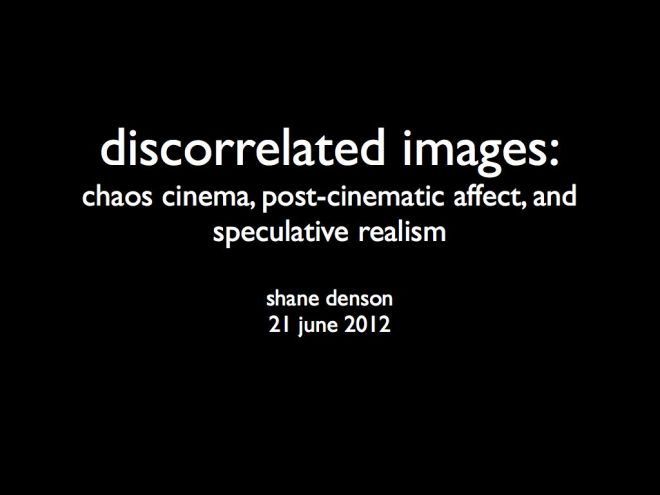
On the occasion of our “Chaos Cinema” film series, where the topic yesterday was Michael Bay’s Transformers (2007), I gave a short talk on the notion of “discorrelated images” — an idea that percolates (though is not named as such) in my dissertation, emerging through conversation with a number of thinkers, ideas, and images: Deleuze (and Guattari) on “affection images” and “faciality,” Henri Bergson on living (and other) “images,” Brian Massumi on affect and “passion,” Mark Hansen on the “digital facial image” and “the medium as environment for life,” and others, including Boris Karloff and the iconic image of Frankenstein’s monster. All of which are left out of the picture in yesterday’s talk — which was designed to set the stage for further thinking, to be suggestive rather than definitive, and thus serves more to raise questions than to answer them. In any case, I reproduce the text (and slides) here, in case anyone is interested:

Michael Bay’s 2007 film Transformers can be seen as an interesting case of transmedial serialization in the context of what Henry Jenkins calls our “convergence culture” — interesting because, reversing the typical order of merchandising processes, Bay’s film and its sequels are part of a franchise that originates with (rather than giving rise to) a line of toys. Unlike Star Wars action figures, for example, which are extracted from narrative contexts and made available for supplementary play, Transformers are toys first, and only subsequently (though promptly) narrativized. These toys, first marketed in the US by Hasbro in 1984, but based on older Japanese toylines going by other names, spawned several comic-book series, Saturday-morning cartoons, an animated film, novelizations, video games implemented across a wide range of platforms, and the trilogy of films directed by Michael Bay with backing from Steven Spielberg.
Despite such rampant adaptation and narrativization, however, we shouldn’t lose sight of the toys, which continue to be marketed to kids today, nearly thirty years after they were first marketed to me and my elementary school friends: the toys themselves offer only the barest of narrative parameters (good guys vs. bad guys) for the generation of storified play scenarios. Transformers, in opposition to Star Wars figures, which always exist in some relation to preexistent stories, are not primarily interesting from a narrative point of view at all: Autobots and Decepticons are basically just two teams, and the play they generate need not be any more narratively complex than a soccer or football match (where tales are told, to be sure, but as a supplement to the ground rules and the moves made on their basis).

Instead, the basic attraction of Transformers is, as the name says, the operation of transformation. Transformers are therefore mechanisms first, and the attraction for children (mostly boys) growing up in the early 80s was to see how they worked. Transformers, in other words, are the perfect embodiments of an “operational aesthetic” in the original sense of the term, first introduced by Neil Harris to describe the attraction of P.T. Barnum’s showmanship against the background of nineteenth century freak shows, magic shows, World Expos, and popular exhibitions of the latest technologies. More recently, Jason Mittell has usefully employed the concept to explain the attraction of “narratively complex television,” but the operationality at issue here (i.e. in the case of the Transformers) is of a stubbornly non-narrative sort. Thus, consonant with a general trait of science-fiction film (with its narratively gratuitous displays of special effects, which often interrupt the story to show off the state of the art in visualization technologies), narrativizations of Transformers are inherently involved in competitions of interest: story vs. mechanism, diegesis vs. medium. The Transformers themselves, who are more interesting as mechanisms than as characters, are the crux of these alternations.
(On this basis we might say, riffing on Niklas Luhmann, that they embody an “operative difference between substrate and form” and thus themselves constitute the “media” of a flickering cross-medial serial proliferation. But that’s another story…)
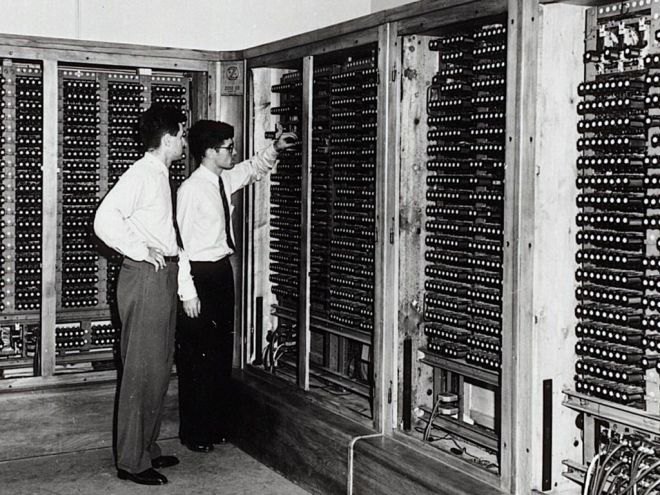
Let me go back to the idea of convergence culture, which I’d like to connect with this operational mediality. It’s important to keep in mind that our convergence culture, in Jenkins’s terms, is enabled by a different type of convergence with which it remains in constant communication: viz. the specifically technological convergence of the digital. Is it stretching things to say that the original toys latched onto an early eight-bit era fascination with the way electronic machines could generate interactive play? In other words, they spoke to an interest in the way machines worked — as the basic object of interactive video games — and promoted fantasies of artificial intelligences and robotic agencies that would be a match for any human subject (or gamer).

In any case, Michael Bay’s Transformers, along with the film’s sequels, would not be possible without much more advanced digital technologies; the films know it, we know it, and the films know we know it, so the role of the digital is not hidden but foregrounded and positively flaunted in the films. Typically for a transitional era of media-technological change, which, it would seem, we are still going through with respect to the digitalization of cinema (and of life more broadly), there is a fascination with medial processes that the films hook into. The result is that attentions are split between diegesis and medium, story and spectacle. The Transformers serve as a convenient fulcrum point for such oscillations, thus capitalizing on the uncertain valencies of media change while connecting phenomenological dispersal with a story that in some ways speaks to a larger decentering of human perspectives and agencies in the face of convergence and computation processes — to a feeling of contingency about the human that is related in various ways to digital technologies.
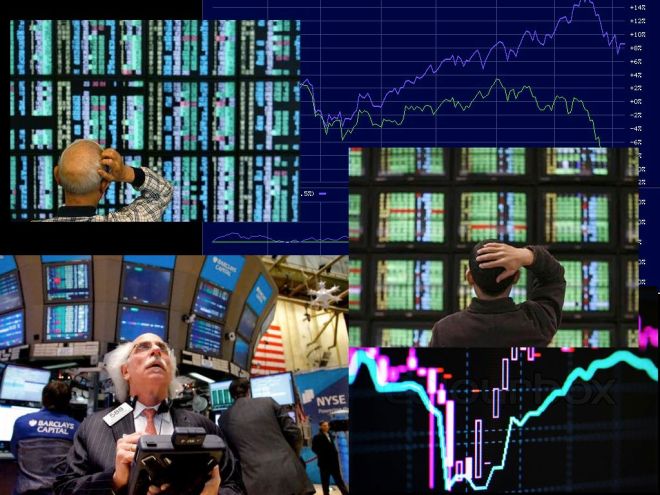
For example, there’s a sense of powerlessness with respect to digitally automated finance, which employs robotically operating algorithms to expedite the process and efficiency of transactions, splitting major operations into distributed micro-scale packet transfers that occur faster than the blink of an eye, and at truly sublime scales — both infinitesimally smaller and faster than human sensory ratios and with the potential to produce cataclysmically large results. The entire realm of human action, which exists in between these scales, is marginal at best: the machines originally meant to serve the interests of (some) humans end up serving only the algorithms of a source code — with respect to which, we are perhaps only bugs in the system. It is easy to extrapolate sci-fi fantasies: for example, the emergence of Skynet — or is it Stuxnet?
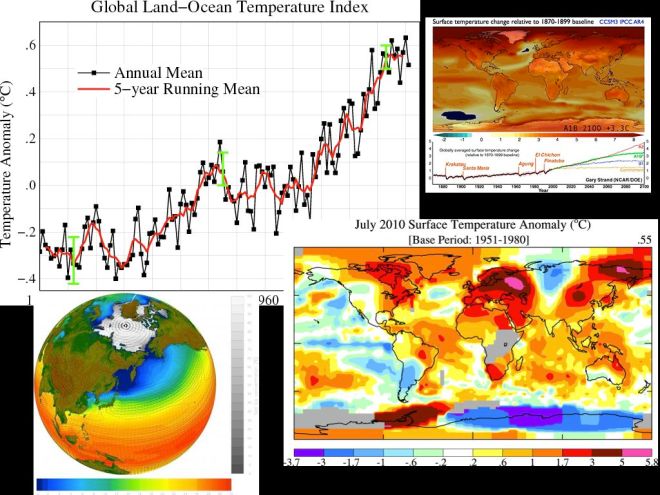
But the decentering of the human perspective through digital technology is taking place in much less fantastic manners, and in ways that do not support any kind of humans-first narratives of heroic reassertion: global warming, which is revealed to us through digital modeling simulations, points not towards our roles as victims of a pernicious technology of automation, but shows us to be the culprits in a crime the scale of which we cannot even begin to imagine. Categorically: we cannot imagine the scale, and this fact challenges us to rethink our notions of morality in ways that would at least attempt to account for all the agencies and ways of being that fall outside of narrowly human sense ratios, discourses, cultural constructions, senses of right and wrong, the true and the beautiful, the false and the ugly…. Through digital technologies, we have found ourselves in an impossible position: our technologies seem to want to live and act without us, and our world itself, ecologically speaking, would apparently be far better off without us. We are forced, in short, to try to think the world without us.
“Without us” can mean both “in our absence” or “beyond us” — outside our specific concerns, attachments, and modes of engagement with the world. The attempt to think, in this sense, “the world without us” characterizes the goal of “speculative realism,” a recent tendency in philosophy defined by its opposition to what Quentin Meillassoux calls “correlationism,” or the idea that reality is exhausted by our means of access to it. Against this notion, which correlates human thought and being on a metaphysical level, the speculative realists challenge us to think the world apart from our narrow view of it, to renounce an essentialism of the human perspective, and to escape to the “Great Outdoors.”
What does this have to do with Transformers and so-called “chaos cinema”? I’m trying to suggest something about the affective state, the structure of feeling, that produces and is (re)produced in and by our media culture today — a structure of feeling that Steven Shaviro calls “post-cinematic affect.” This broader context is largely ignored in Matthias Stork’s conception of “chaos cinema,” which is defined narrowly and technically, in terms of a break with classical continuity. These breaks do occur, and Stork has demonstrated their existence quite powerfully in his video essays, but they are only symptomatic of larger shifts. Shaviro has put forward a seemingly related notion of “post-continuity,” but he is careful to point out that continuity is not what’s centrally at stake. Post-cinematic affect is not served or expressed solely by breaking with principles of continuity editing; rather, continuity is in many instances simply beside the point in relation to a visceral awareness and communication of the affective quality of our historical moment of indeterminacy, contingency, and radical revision. The larger significance of a break with principles of classical continuity editing — rather than just sloppy filmmaking, as Stork sometimes seems to suggest, or quasi avant-garde radicalism — has instead to do with the correlation of continuity principles with the scales and ratios of human perception. Suture and engrossment in classical Hollywood works because those films structure themselves largely in accordance with the ways that a human being sees the world. (It goes without saying that this perceptual model is one that has as its touchstone a normative model of human embodiment, neurotypical cognitive functioning, and relatively unmarked racial, class, and gender types.) And while it has long been clear to feminist critics, among others, that the normative model of (unqualified, unmarked) humanity to which classical film speaks was in need of problematization, I would argue that the human itself has become a problem for us, and that “our” films have registered this in a variety of ways. The momentary breaks with continuity that Stork singles out as the defining features of chaos cinema are just one of the ways.
More generally, I suggest, we witness the rise of the discorrelated image: an image that problematizes, if not altogether escaping, the correlation of human thought and being. The teaser trailer for Transformers (also integrated into the film itself) uses nonhuman subjective shots — images seen through the eyes of a robot, the Mars rover Beagle 2 — to promote its story about an intelligent race of machines. In a somewhat different vein, The Hurt Locker opens with images mediated through the camera-eyes of a robot employed for defusing bombs from a distance. The Paranormal Activity series employs a variety of robotic or automated camera systems. Wall-E, Cars, and a host of other digital animation films are all about the perceptions, feelings, and affects of nonhuman machines. Of course, there’s nothing new about such representations, and they are highly anthropomorphic besides. But what if these are just primers, symptomatic indicators, or gentle nudges, perhaps, towards something else? (Significantly, both Jane Bennett, in the context of her notion of “vibrant matter,” and Ian Bogost, with regard to his project of “alien phenomenology,” have argued for the necessity of a “strategic anthropomorphism” in the service of a nonhuman turn.) In fact, what we find here is that the representational level in such films is coupled with, and points toward, an extra-diegetic fact about the films’ medial mode of existence: digital-era films, heavy with CGI and other computational artifacts, are themselves the products of radically nonhuman machines — machines that, unlike the movie camera, do not even share the common ground of optics with our eyes. Accordingly, the supposed “chaos” of “chaos cinema” is not about a break with continuity; rather, it’s about a break with human perception that materially conditions the cinema (and visual culture more broadly) of the early 21st century. Again, in Transformers, the process of transformation is the crux, the site where discorrelation is most prominently at stake as the object of an operational aesthetic. The spectacle of a Transformer transforming splits our attention between the story and its (digital) execution, between the diegesis and the medial conditions of its staging, which are in turn folded back into the diegesis so as to enhance and distribute a more general feeling of fascination or awe.
What do we see when a Transformer transforms? What we don’t see, necessarily, is a break with the principles of continuity editing. Instead, we witness a discorrelation of the image by other means: we register the way in which our desire to trace the operation of the machine is categorically outstripped by the technology of digital compositing, which animates the transformation by means of algorithmic processes operating on the scale of a micro-temporality that is infinitesimally smaller and faster than any human subject’s ability to process or even imagine it. These images, I contend, are the raison d’etre of the film itself. But they are not “for us,” except in the sense that they challenge us to think our contingency, to intuit or feel that contingency on the basis of our sensory inadequacy to the technical conditions of our environments. A hopeful story, complete with adolescent love interest and other minor concerns, counters this vision of our own obsolescence. But the discorrelated image of transformation is the aesthetic crux of the film, quite possibly the only thing worth watching it for, and perhaps even the bearer of a (probably unintentional) ethical injunction, beyond the rather flimsy human-centered narrative (and the clearly conservative politics, militarism, and apparent misogynism): the discorrelated image, in which the process of transformation can only be suggested to our lagging sensory apparatuses, challenges us performatively, by confronting us with an image of our own discorrelation; viscerally, it asks us to attune ourselves to an environment that is broader than our visual capture of it, faster than our ability to register it, and more or less indifferent to our concernful perception of it. Materially, medially, and ontologically true to the 1980s tagline, the discorrelated images of Michael Bay’s Transformers are indeed “More than meets the eye!”
In chapter 6 of my dissertation, I ask: “what would it mean to think media beyond correlationism?” In the above video, a computer (or code) repeatedly asks another computer (or code): “What would it mean to think media non-correlationally?”
According to the (presumably human-generated) description of the video on YouTube, the famous “Eliza algorithm discusses about object oriented ontology with another code that selects sentences from a corpus of related material. Result is an object oriented (alien) version of Turing test.”
Interestingly, though not surprisingly, Eliza has no answer to the question of what it would mean to think media non-correlationally. She/it responds with other questions: “What comes to mind when you ask that?”, “Why do you ask?”, “Have you asked anyone else?”, or “Does that question interest you?” On the whole, fair questions, I suppose.
[Incidentally, I just googled the question as worded by the computer, i.e. “What would it mean to think media non-correlationally?”, to see what corpus the code is drawing on. Interestingly, it seems that those were in fact my own words, which I posted in a comment on Jussi Parikka’s blog Machinology back in December (his post here: “OOQ — Object-Oriented-Questions”). I’m intrigued now to know who posted the video — who the YouTube user TheTuib is, if in fact it’s a human person…]
Above, “Crosseyed and Painless” by the Talking Heads: this is the video which set the stage for Timothy Morton’s energetic and thought-provoking talk at the Nonhuman Turn conference the other day (you can find a video of the complete talk here, and the slides are posted on Morton’s blog here). The music video itself is amazing enough to warrant posting it here separately, though, and I am quite sympathetic to Morton’s rereading of its so-called “postmodernism” in terms of an awareness of the nonhumans that are progressively reshaping our world (in the guises of capital and ecological disaster, for example, but also media changes). Enjoy!
[vodpod id=ExternalVideo.1018220&w=425&h=350&fv=vid%3D22376867%26amp%3Bautoplay%3Dfalse]
Plenary talk by Mark Hansen, recorded May 5, 2012, at the “Nonhuman Turn” conference at the University of Wisconsin-Milwaukee’s Center for 21st Century Studies.